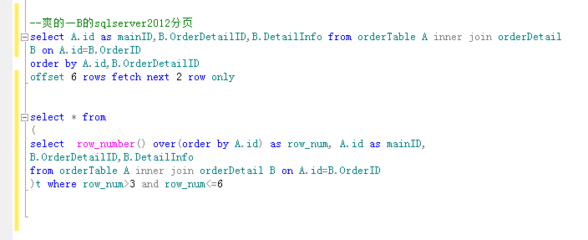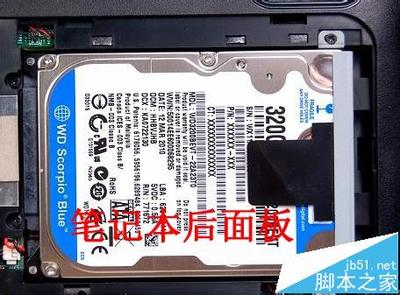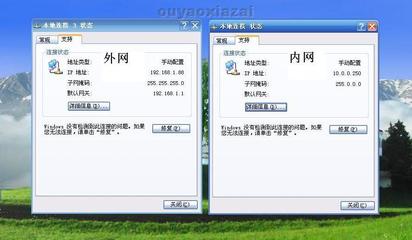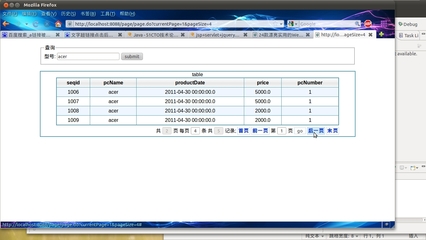
语句形式:SELECT TOP 10 *FROM TestTableWHERE (ID NOT IN (SELECT TOP20 id FROM TestTable ORDER BY id))ORDER BY IDSELECT TOP 页大小 *FROM TestTableWHERE (ID NOT IN (SELECT TOP页大小*页数 id FROM 表 ORDER BY id))ORDER BY ID 2.分页方案二:(利用ID大于多少和SELECTTOP分页)
语句形式: SELECT TOP 10 *FROM TestTableWHERE (ID > (SELECTMAX(id) FROM (SELECT TOP 20 id FROMTestTable ORDER BYid) AS T))ORDER BY IDSELECT TOP 页大小 *FROM TestTableWHERE (ID > (SELECT MAX(id) FROM (SELECT TOP 页大小*页数id FROM表 ORDER BYid) AS T))ORDER BY ID
3.分页方案三:(利用SQL的游标存储过程分页)
create procedureSqlPager@sqlstr nvarchar(4000), --查询字符串@currentpage int, --第N页@pagesize int --每页行数asset nocount ondeclare @P1 int, --P1是游标的id @rowcount intexec sp_cursoropen @P1output,@sqlstr,@scrollopt=1,@ccopt=1,@rowcount=@rowcountoutputselect ceiling(1.0*@rowcount/@pagesize) as总页数--,@rowcount as 总行数,@currentpage as 当前页set@currentpage=(@currentpage-1)*@pagesize+1exec sp_cursorfetch@P1,16,@currentpage,@pagesizeexec sp_cursorclose @P1set nocount off其它的方案:如果没有主键,可以用临时表,也可以用方案三做,但是效率会低。建议优化的时候,加上主键和索引,查询效率会提高。通过SQL 查询分析器,显示比较:我的结论是:分页方案二:(利用ID大于多少和SELECTTOP分页)效率最高,需要拼接SQL语句分页方案一:(利用Not In和SELECT TOP分页) 效率次之,需要拼接SQL语句分页方案三:(利用SQL的游标存储过程分页) 效率最差,但是最为通用关于SQL Server SQL语句查询分页数据的解决方案比如:要求选取 tbllendlist 中第3000页的记录,每一页100条记录。----------方法1:----------select top 100 * from tbllendlistwhere fldserialNo not in(select top 300100 fldserialNo from tbllendlistorder by fldserialNo)order by fldserialNo----------方法2:----------SELECT TOP 100 *FROM tbllendlistWHERE (fldserialNo >(SELECT MAX(fldserialNo)FROM (SELECT TOP 300100 fldserialNoFROM tbllendlistORDER BY fldserialNo) AS T))ORDER BY fldserialNo方法1执行速度比较快!不过,这种做法还是很麻烦,强烈期待微软发明新的可分页的SQL语句来!!!!--前提是必需有一列是自动增长类型,唯一性--方法一SELECT DISTINCT TOP 8 CategoryIDFROM tbl_Product_ProductsWHERE (UserID = 73) AND (CategoryID > (SELECT MAX(categoryid) FROM (SELECT DISTINCT TOP 16categoryid FROMtbl_product_products where userid=73 ORDER BYcategoryid) AS b))ORDER BY CategoryID--方法二select top 10 * from [order details]where orderid>all(select top 10 orderid from [orderdetails] order by orderid)order by orderid
 爱华网
爱华网


